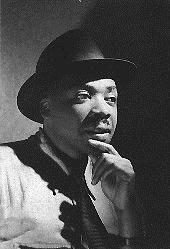Claude Clark
| Claude Clark | |
|---|---|

Claude Clark in earlier years
|
|
| Born |
November 11, 1915 Rockingham, Georgia |
| Died | April 21, 2001 (aged 85) Oakland, California |
| Nationality | United States |
| Education |
Philadelphia Museum School of Art, Certificate, 1935-39 Studies at Barnes Foundation, Merion, PA, Fellowship, 1939-44 Sacramento State University, B.A. 1958 University of California, Berkeley, CA, M.A., 1962 |
| Known for | Painting, Black Studies Curriculum, West Coast Black Arts Movement |
| Notable work | Resting, Guttersnipe, Rain, Freedom Morning, Raising the Cross, Black Arts Perspective, A Black Teachers Guide to a Black Visual Arts Curriculum |
| Spouse(s) | Diama (Effie) Lockhart Clark |
| Website | www |
Philadelphia Museum School of Art, Certificate, 1935-39 Studies at Barnes Foundation, Merion, PA, Fellowship, 1939-44 Sacramento State University, B.A. 1958
Claude Clark (November 11, 1915 - April 21, 2001) was an African American painter, printmaker and art educator. Clark’s subject matter was the diaspora of African American culture, including dance scenes, street urchins, marine life, landscapes, and religious and political satire images executed primarily with a palette knife.
Claude Clark was born on a tenant farm in Rockingham, Georgia November 11, 1915. In early August 1923, Clark’s parents left the south for a better life in Philadelphia, Pennsylvania during the Great Migration. Clark attended Roxborough High School where he wrote poetry but also discovered a talent for painting. His Sunday School teacher encouraged him to exhibit in Sunday school class and at church.
Clark studied at the Philadelphia Museum of Art (1935-1939) following high school graduation. He applied to and was eventually accepted to the Barnes Foundation in 1939.
In 1941, Claude met the daughter of an African Methodist Episcopal Church minister, Effie May Lockhart from California. They married in June 1943 and formed a dynamic “power” partnership in art, education and philosophy. He continued his paint studies at The Barnes Foundation while teaching art in the Philadelphia Public School system during the early years of their marriage. The couple moved to Alabama and finally California while continuing their careers.
During the Great Depression Clark contacted the Artists Union for work through the Works Progress Administration (WPA). He worked with the WPA from 1939 – 1942. Clark joined the graphics art shop where he worked with Raymond Seth and Dox Thrash.
Clark was the subject of many articles and publications. He also was the author of A Black Art Perspective, a Black Teachers Guide to a Black Visual Arts Curriculum, Merritt Press 1970. As a member of the Black West Coast Arts Movement he co-developed the first African American Studies curriculum. He also mentored and supported many young emerging scholars and artists.
...
Wikipedia
